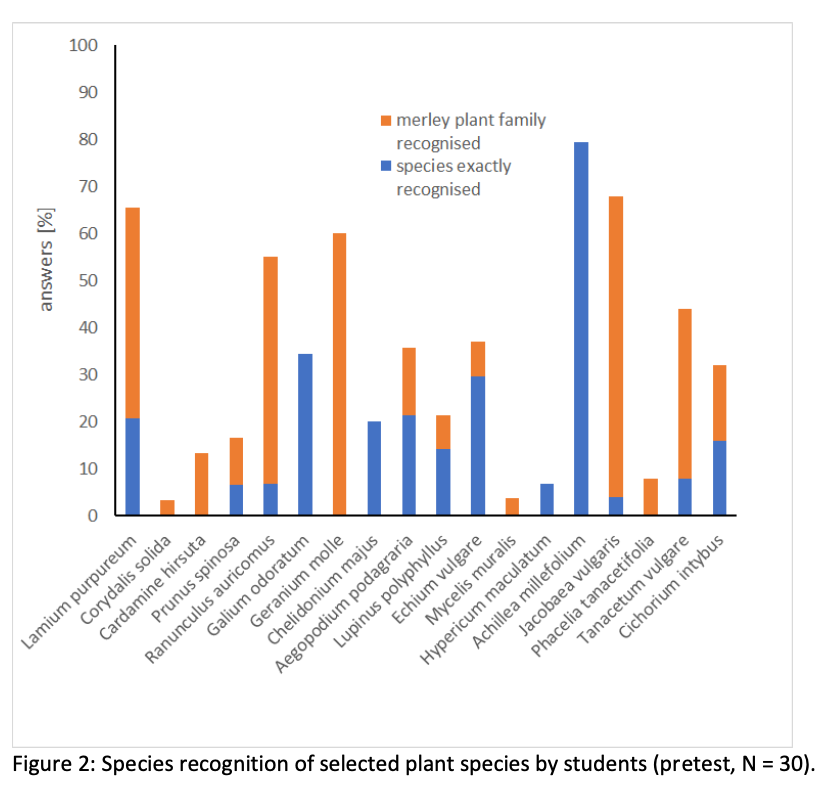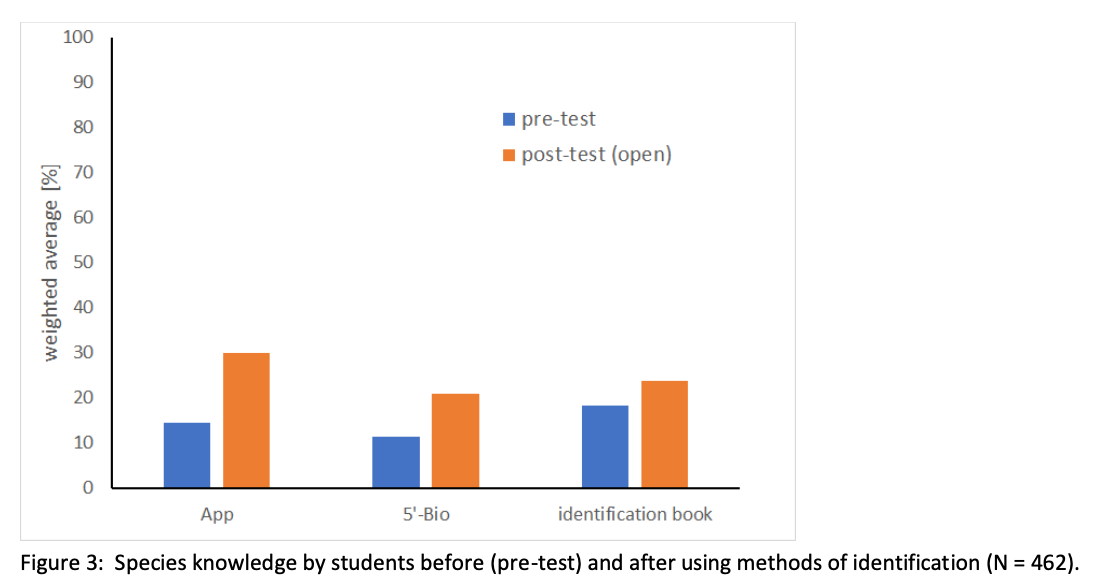Improvement of student’s plant species knowledge by different identification methods
Martin Feike, Susan Pollin & Carolin Retzlaff-Fürst
Keywords: knowledge of species, identification, teacher training
Theoretical background
Knowledge of species is an important detail and learning goal in biology lessons, as a good knowledge of species is essential for understanding biological context (especially for the topics of ecology and evolution). Furthermore, a good knowledge of species can contribute to a better understanding of nature conservation, which can promote environmental action (Berck & Klee, 2013). Unfortunately, animals receive more public attention than plants, which is described by the phenomenon of "plant blindness" (Pany, 2014; Wandersee & Schussler, 1999). With the ongoing loss of biodiversity and desired Sustainable Development Goal 15 (United Nations, 2015) the relevance of plant species knowledge is reinforced. An analysis of curriculums in Germany shows that the method of identification with books, apps and outdoor-excursions are recommended activities, in addition to making observations, herbarium and creating species profiles (Lindemann-Matthies & Remmele, 2021). For this reason, three identification methods for increasing the knowledge of plant species were tested, in order to investigate the influence of the method on improving species knowledge in the medium term. A theory of concept learning describes that intensive engagement promotes the memory of knowledge (Mietzel, 2007). Under many other conditions, attention and meaning are also relevant for recognition (Rugg, 1998). Therefore, it can be assumed that methods with a focus on the importance of plants, such as the presentation by the teacher, increase species knowledge. As well it can be assumed that in-depth examination of the plant via nature guide promotes the knowledge of species. In contrast, the use of an ID-App to identify the species (by just taking a photo) is not considered to be very beneficial.


